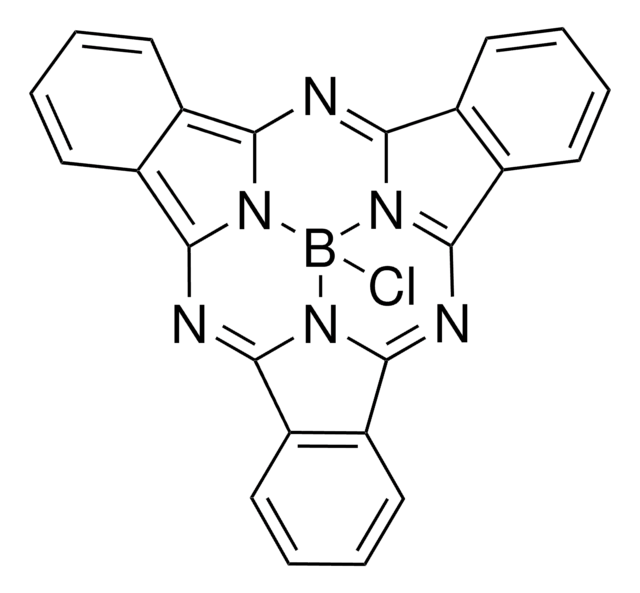추천 제품
분석
97% (HPLC)
형태
powder
mp
285-290 °C
λmax
570 nm in dichloromethane
SMILES string
Cc1ccc(cc1)N(c2ccc(C)cc2)c3ccc(cc3)-c4ccc(\C=C(/C#N)C#N)c5nsnc45
InChI
1S/C30H21N5S/c1-20-3-10-25(11-4-20)35(26-12-5-21(2)6-13-26)27-14-7-23(8-15-27)28-16-9-24(17-22(18-31)19-32)29-30(28)34-36-33-29/h3-17H,1-2H3
InChI key
METIWNNPHPBEHP-UHFFFAOYSA-N
일반 설명
애플리케이션
A vacuum-deposited organic solar cell employing this novel donor-acceptor-acceptor (D-A-A) donor molecule; DTDCPB; combined with the electron acceptor C60/ C70 achieved a record-high power conversion efficiency (PCE) of 6.8%.
Device structure:
MoO3 (30nm) / DTDCPB (7nm) / DTDCPB:C70 (40nm) / C70 (7nm) / BCP (10nm) / Ag (150nm)
Device performance:
- JSC = 13.48 mA/cm2
- VOC = 0.95 V
- FF = 0.55
- PCE = 6.8%
신호어
Warning
유해 및 위험 성명서
Hazard Classifications
Acute Tox. 4 Dermal - Acute Tox. 4 Inhalation - Acute Tox. 4 Oral - Eye Irrit. 2 - Skin Irrit. 2 - STOT SE 3
표적 기관
Respiratory system
Storage Class Code
11 - Combustible Solids
WGK
WGK 3
Flash Point (°F)
Not applicable
Flash Point (°C)
Not applicable
시험 성적서(COA)
제품의 로트/배치 번호를 입력하여 시험 성적서(COA)을 검색하십시오. 로트 및 배치 번호는 제품 라벨에 있는 ‘로트’ 또는 ‘배치’라는 용어 뒤에서 찾을 수 있습니다.
문서
Solution-processed organic photovoltaic devices (OPVs) have emerged as a promising clean energy generating technology due to their ease of fabrication, potential to enable low-cost manufacturing via printing or coating techniques, and ability to be incorporated onto light weight, flexible substrates.
자사의 과학자팀은 생명 과학, 재료 과학, 화학 합성, 크로마토그래피, 분석 및 기타 많은 영역을 포함한 모든 과학 분야에 경험이 있습니다..
고객지원팀으로 연락바랍니다.![2,4-Bis[4-(N,N-diphenylamino)-2,6-dihydroxyphenyl]squaraine 98%](/deepweb/assets/sigmaaldrich/product/structures/303/054/d8b9c845-3623-4f5a-8a30-ab6731034171/640/d8b9c845-3623-4f5a-8a30-ab6731034171.png)




![1,3-Bis[4-(dimethylamino)phenyl]-2,4-dihydroxycyclobutenediylium dihydroxide, bis(inner salt) Dye content 90 %](/deepweb/assets/sigmaaldrich/product/structures/301/519/500149b3-198c-44cf-b952-7e91f54fc48e/640/500149b3-198c-44cf-b952-7e91f54fc48e.png)



